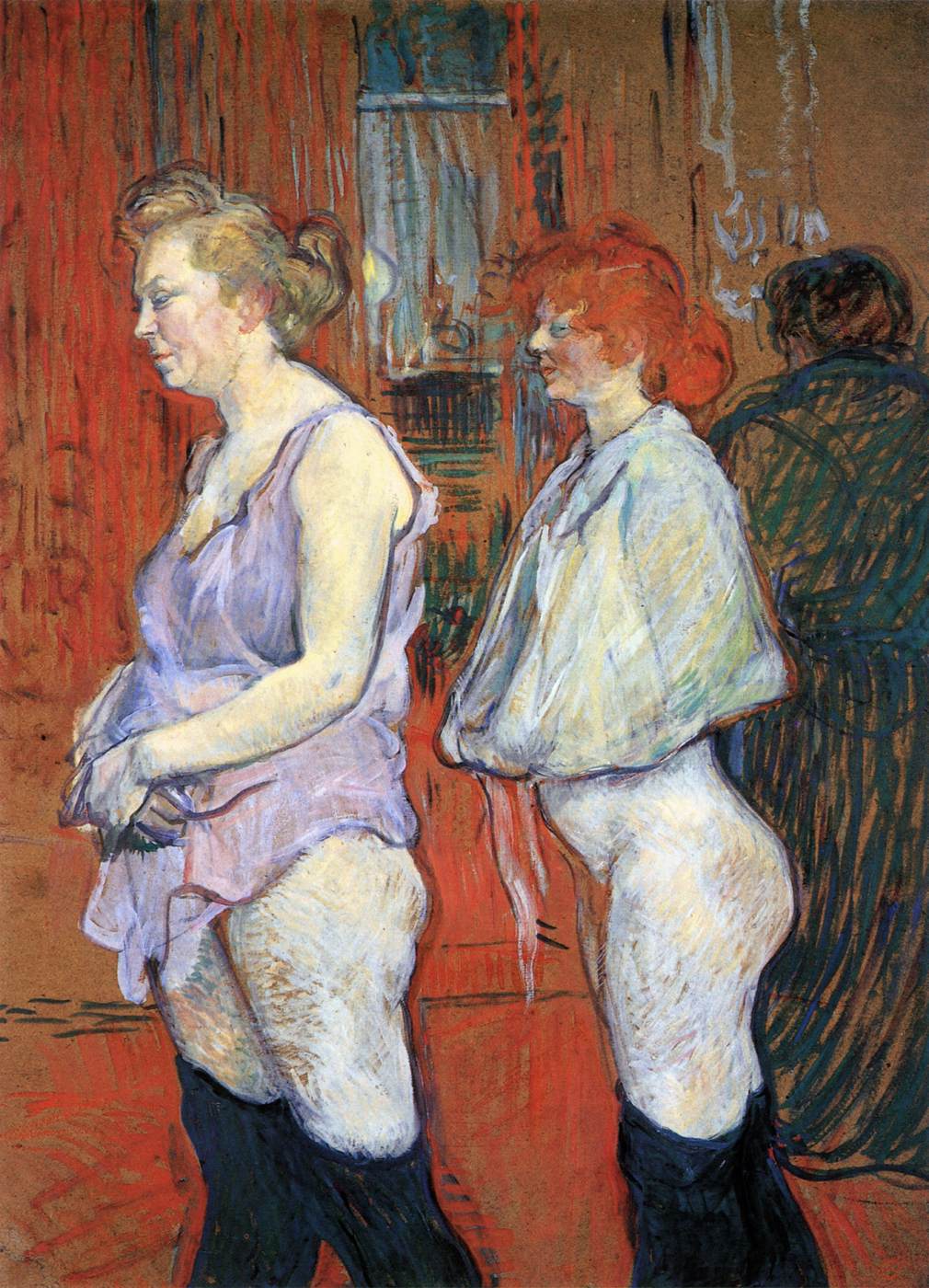Description
"Rue des Moulins: The Medical Inspection" is a masterpiece by the famous French artist Henri De Toulouse-Lautrec. Originally measuring 82 x 60 cm, this painting stands out for its unique artistic style and intriguing composition.
Toulouse-Lautrec's artistic style is characterized by its focus on the representation of nightlife and the marginal characters of late 19th-century Parisian society. "Rue des Moulins: The Medical Inspection" is no exception, as it portrays the prostitutes who worked in the brothels on Rue des Moulins in Paris.
The composition of the painting is remarkably interesting. Toulouse-Lautrec uses unusual perspective to show the women in different planes, creating a sense of depth and movement in the scene. The focus is on the central figure, a prostitute who is being examined by a doctor. The woman's posture and the expression on her face convey a mixture of vulnerability and resignation.
The use of color in this painting is also remarkable. Toulouse-Lautrec uses a dark, somber color palette, such as shades of brown, black, and gray, to reflect the sordid and melancholic atmosphere of brothels. However, it also incorporates more vibrant pops of color into the women's clothing and room details, creating an interesting and attractive contrast.
The history of "Rue des Moulins: The Medical Inspection" is fascinating. Toulouse-Lautrec was a close observer of Parisian nightlife and mingled with the characters he portrayed in his paintings. This particular work is believed to have been inspired by his visits to the brothels on Rue des Moulins, where he may have witnessed mandatory medical inspections for prostitutes.
In addition to these known aspects, there are lesser-known details about this painting. For example, Toulouse-Lautrec is said to have based the prostitute's face on his mistress, a woman named Carmen Gaudin. This adds a personal and emotional touch to the work.
In short, "Rue des Moulins: The Medical Inspection" is a captivating painting showcasing Toulouse-Lautrec's distinctive artistic style and his focus on Parisian nightlife. Its composition, use of color, and historical and personal details make this work a truly interesting and memorable piece.

